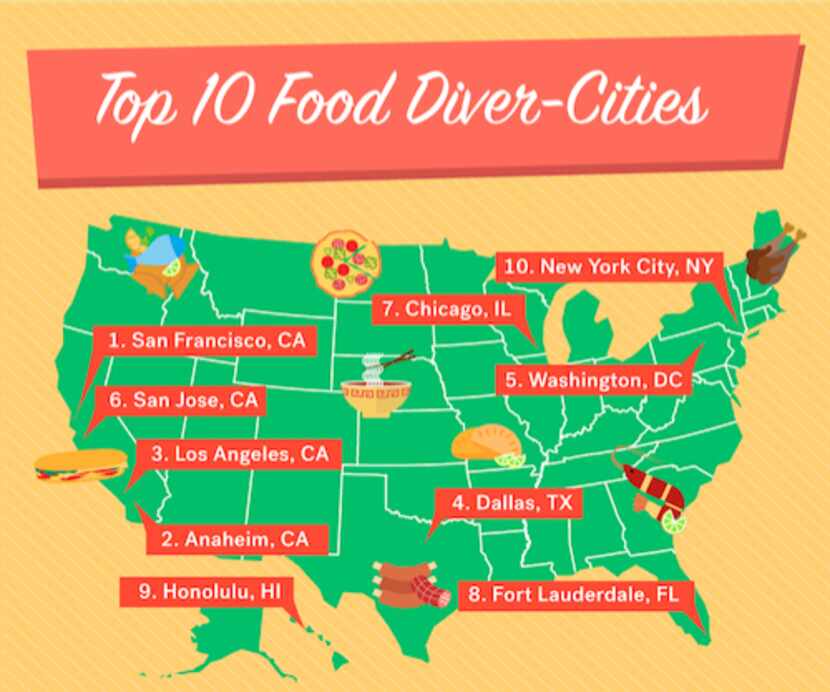Dallas, as adventurous eaters know, is an amazing place for discovering the cuisines of the world.
Now a new study puts that delicious fact in perspective: Dallas is the fourth-most diverse dining city in the United States, it concludes. Commissioned by real estate search and advertising website Trulia, the study ranks Dallas just behind three California cities — San Francisco, Anaheim and Los Angeles (Nos. 1, 2 and 3 respectively) — when it comes to the breadth of variety of foods and how frequently residents dine out.

More specifically, it was the Dallas-Plano-Irving area the study considered for national comparison, and it cited Plano for giving the Dallas area a big diversity boost.
"Plano's Asian population, ranging from Middle Eastern to Indian, and with a large Chinese community to top it off, is three times the overall Dallas metro average," says the study.

Based on the Dallas area's 1.51 restaurants per square mile (compared to 9.24 for San Francisco, 8.27 for Anaheim and 5.12 for Los Angeles), the 83 cuisines represented here and the amount we spend in restaurants ($1.14) for every dollar we spend on groceries, Dallas's final index score was 77.6 of a possible 100.
Plano gives the Dallas area a big diversity boost.
More takeaways and details from the study:
•At No. 20, Houston (Houston-The Woodlands-Sugar Land) is the only other Texas city to make the top 20.
•The cities with the least culinary diversity were (listed from Nos. 100 to 91) were Fresno, Calif.; Bakersfield, Calif.; Rochester, N.Y.; Worcester, Mass.; Syracuse, N.Y.; Tucson; Allentown, Pa.; Albany, N.Y.; Knoxville, Tenn.; and Wichita, Kan.
•The study used five metrics to determine the culinary diversity rankings: Yelp data on restaurant type by tag; total number of types of restaurants in a metro area; the number of restaurants per 10,000 occupied households; calculations that resulted in scores for overall diversity and proximity of cuisines; and dollars spent eating out per dollar spent on groceries.


/cloudfront-us-east-1.images.arcpublishing.com/dmn/BYAZ3RIRNFBXLBYC5GZ237KW5M.jpg)
/cloudfront-us-east-1.images.arcpublishing.com/dmn/VH63ULLHIWUA4OJN2KGK56O5YA.jpg)
/cloudfront-us-east-1.images.arcpublishing.com/dmn/FZWII4GBZNCIXIMCMZNHR7UYBE.jpg)
/cloudfront-us-east-1.images.arcpublishing.com/dmn/QB445EFSYNHK7KDT73KK4XNTHE.jpg)
/cloudfront-us-east-1.images.arcpublishing.com/dmn/PZBRGNTNG6XGUJULLFTJHXNZ3U.jpg)